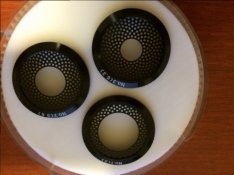tkamiya
Member
I am wondering....
DOF (Depth of Field/Depth of Focus) is a function of aperture. (Yes, it has more variables, but with everything ELSE being equal, it can be reduced to it being a function of aperture)
Aperture is proportional to transmission of light. (more properly expressed in reverse, however...)
Then, what happens to DOF if you keep the aperture constant but place a neutral density filter in front of the lens?
AND... what happens to DOF if you place those disks that come with Mamiya RB 150mm lens inside?
I am thinking in the first case, DOF will not change as function of ND filters but I am not so sure about the second one. The disks the said RB lens use is a series of holes. In effect, it does change the aperture opening albeit in a lot of holes, not just a single one.
Does anyone know??
I'd appreciate very much if anyone wants to post a reply, if you are guessing or making an educated guess, indicate so, and if you do know the answer either by experience or in terms of mathematical reasoning, indicate so. Mine is more of a guess with some reasoning.
DOF (Depth of Field/Depth of Focus) is a function of aperture. (Yes, it has more variables, but with everything ELSE being equal, it can be reduced to it being a function of aperture)
Aperture is proportional to transmission of light. (more properly expressed in reverse, however...)
Then, what happens to DOF if you keep the aperture constant but place a neutral density filter in front of the lens?
AND... what happens to DOF if you place those disks that come with Mamiya RB 150mm lens inside?
I am thinking in the first case, DOF will not change as function of ND filters but I am not so sure about the second one. The disks the said RB lens use is a series of holes. In effect, it does change the aperture opening albeit in a lot of holes, not just a single one.
Does anyone know??
I'd appreciate very much if anyone wants to post a reply, if you are guessing or making an educated guess, indicate so, and if you do know the answer either by experience or in terms of mathematical reasoning, indicate so. Mine is more of a guess with some reasoning.













